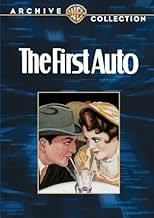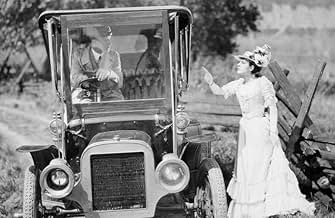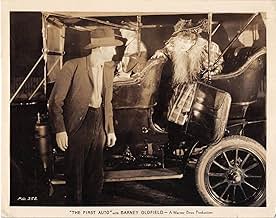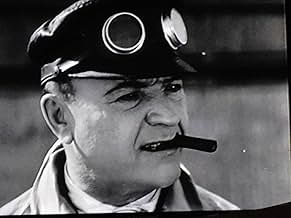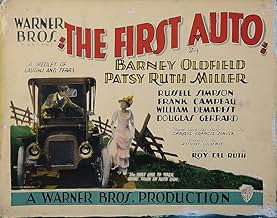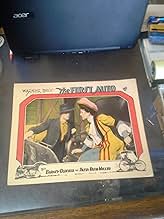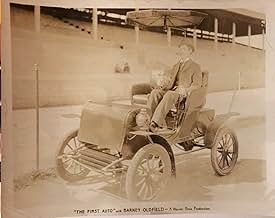Añade un argumento en tu idiomaHank owns horses, stables horses and races horses. He favorite horse always wins and he is prosperous and well known. His son (Bob), however, dreams only of the future of the horseless carri... Leer todoHank owns horses, stables horses and races horses. He favorite horse always wins and he is prosperous and well known. His son (Bob), however, dreams only of the future of the horseless carriage and not of the horse. This causes problems between Hank and Bob. As the people in the ... Leer todoHank owns horses, stables horses and races horses. He favorite horse always wins and he is prosperous and well known. His son (Bob), however, dreams only of the future of the horseless carriage and not of the horse. This causes problems between Hank and Bob. As the people in the town convert from horses to autos, Hank detests those who switch - so he loses his friends... Leer todo
- Dirección
- Guión
- Reparto principal
- Bob Armstrong
- (as Chas. E. Mack)
- Joe Saunders
- (sin acreditar)
- Livery Handler at Auction
- (sin acreditar)
- Townsperson Who Laughs Heartily
- (sin acreditar)
- Elmer Hays
- (sin acreditar)
- Boy
- (sin acreditar)
- Young Woman
- (sin acreditar)
- Barber
- (sin acreditar)
- Mrs. Stebbins
- (sin acreditar)
Reseñas destacadas
Besides having a more complex soundtrack, "The First Auto" also serves as an historical record showcasing some of the very earliest horseless carriages under their own power. The movie's plot describes a successful race horse owner, Hank Armstrong (Russell Simpson), disparaging the advanced technology of automobiles. He wins a bet against one of the car's owners, proving his contention that cars will never replace horses in speed or in power. By the early 1900s, however, Hank's son, Bob Armstrong (Charles Emmett Mack), and all his pals have gasoline engine fever, and are foaming at the mouth to get their hands on them. Bob becomes a race car driver, and an exciting conclusion makes no doubt that automobiles are here to stay.
Not that they were any safer than horse carriages. In real life, actors appearing in "The First Auto" were killed in two separate accidents. Extra and script girl Helen Howard died when her and two other cast members were in a car that collided with another vehicle in downtown Los Angeles. The driver, William Demarest, who played the village funnyman and was Uncle Charlie in 'My Three Sons,' suffered cuts and bruises in the overturned car while extra Loretta Rush cracked her skull. After filming was over, Charles Emmett Mack died in an auto accident. His part as Bob was a major role for Mack, killed at the age of 26.
Mack is a member of the "Horseless Carriage" generation, and is enthralled with the newly developing automobiles. When "Sloe Eyes" succumbs to a stroke, it seems like Simpson's older generation is passing in favor of Mack's auto-crazy youth. But, the passing mare leaves a young colt, "Bright Eyes", with enough horse sense to give primitive kerosene-powered buggies a run for their money. Yet, for the hoof set, it's a losing battle; and, the automobile takes control of the streets. Estranged from his son, Simpson slips into madness and despair. Then, an opportunity to reconcile with young Mack meets with tragedy
The tragedy depicted on-screen was nothing compared to the tragedy occurring off-screen; co-star Charles Emmett Mack was killed (decapitated, reportedly) in a real-life automobile accident on the way to a filming location fro this film. This sadness accompanied the premiere of "The First Auto", as audiences were well aware of Mack's passing. The film is valuable for its early automobile scenes, which were then much of the population's collective memory. Mack could not, obviously, complete his assignment; and, the movie suffers without two essential Mack scenes, near the end of the story.
Mack was a rising star, but it's difficult to determine how he would have transitioned into talking pictures; certainly, this film positioned him well. Warner Bros. used some dialogue in the "sound effects" track of "The First Auto" (common practice, then), which reached critical mass with "The Jazz Singer". Mack was considered an actor of consequence; he was one of Director D.W. Griffith's best latter period "discoveries", making strong impressions in "Dream Street" (1921) and "One Exciting Night" (1922). "The First Auto" also features Barney Oldfield (a celebrity driver) and William Demarest (Uncle Charlie on "My Three Sons").
****** The First Auto (6/27/27) Roy Del Ruth ~ Russell Simpson, Charles Emmett Mack, Patsy Ruth Miller
The story is not that dramatic. It feels as inevitable as the spread of the automobile. It's a little like Hank. I also wonder if this was financed by Ford. Early real racer Barney Oldfield has a minor role. I've never heard of the name but it's interesting to learn something. The old car racing is quite compelling. It has a recklessness about it although I would definitely get rid of the fake flames. The effect looks bad. This is an easy story and probably more compelling for people who lived through the era.
This is a patchwork of a film -- part comedy (including some old vaudeville routines. William Demerest and his clown companion are present for no other reason except comic relief. In vaudeville, the clowns in front of the curtain were there to mask the noise and movement of scenery and costume changes taking place on the stage behind the curtain.) Such clowning was obviously not necessary for the movies, but it's still there -- and we get to see what people were laughing at before stand-up monologue comedy was the only game in town.
The film is part melodrama as we see how a horse in the late 1890's could be the friend and companion of the pre-industrial era, and how the death of a man's horse could bring a man to tears. "A horse is loyal. A horse remembers! A horse knows what gratitude is!" -- words spoken by the father/livery owner who is then called a "Brute" (an animal) by his son.
With it's pre-talkie talking-and-scored soundtrack, it sometimes plays like a rough experiment in early film sound technologies (which exactly parallels the story of the first automobiles -- and how quickly they displaced the horse-centered life.) Within 3 years, silent pictures were as gone from the landscape as horse-drawn buggies. The equally experimental "special effects" fire in the engine of a moving race car isn't exactly the parting of the Red Sea -- but we still get the idea.
It also has the air of a headliner news-reel -- when surprise! Barney Oldfield, playing himself, races around the horse track so that all of America (at least those who went to the movies) could see him do what he was famous for -- speed racing!
At it's heart, however, this is a story. It is about family and about learning what matters (sometimes called family values), and of generations -- a father with both feet firmly planted in the pre-automobile age, and his son who is racing after the biggest technology of the time. They loose each other, almost loose everything else, and then find each other and move into the automobile age together -- where the father opens a car dealership and goes to the car races while the son spends his days at the horse shows. -- and "gosh, what's the world coming to next?" as a bi-plane soars overhead.
This is not a "great" movie -- but it is great fun, and a great window back both to 1927 and it's time of plenty before the stock market crashed us into the Depression; and to the 1927 recollection of 1896, when the lights of technology were just beginning to turn on. It is a wonderful piece of film history, now preserved for my great- and great-great grandchildren. --Thanks to all those doing film preservation -- we love it.
This is an amiable little film and not much more. The animated fire and schmaltzy tone of the film don't help it, but the film is breezy and entertaining. If you are a big fan of silent films, it's well worth seeing. But, if you aren't, this one probably won't change your mind.
By the way, this film features synchronized music and sound effects-- something Warner Brothers was pushing very hard at the time. Additionally, it's ironic that young Mack was actually killed in a car accident near the end of the making of this film! Because of this, I assume that's why so much of the story rests on Simpson and so much of Bob's actions are off-camera and described in the dialog.
¿Sabías que...?
- CuriosidadesCharles Emmett Mack died in a car crash on his way to the studio four months prior to the release of this completed film, though he was not on his way to shoot a car chase to this film as has been often reported. Because of this unfortunate occurrence, when the film eventually was released, cast credits were rearranged, placing Barney Oldfield in top position, even though he only had a relatively short appearance in the film, and Mack was quietly placed in the bottom position, even though he was the star. [The credits for the version shown on TCM lists "Chas. E. Mack" third from the bottom with Oldfield listed last.]
- PifiasMr. Stebbins receives a letter from his insurance company canceling his policy dated 1897, but his car is a 1906 model.
- Citas
Opening Title Card: Once upon a time, a horse was a horse... and was loved as such. This was even before Dan Patch started breaking records, or the Vanderbilt cup races had come to displace the county fair. The latest thing then was a bicycle built for two... Bryan hadn't been heard of... and a nickel was still respected -...
- Créditos adicionales"A Romance Of The Last Horse And The First Horseless Carriage"
- ConexionesEdited into Gadgets Galore (1955)
- Banda sonoraIn My Merry Oldsmobile
(1905) (uncredited)
Music by Gus Edwards
In the score during the opening credits, at the end and as background music
Selecciones populares
Detalles
- Duración
- 1h 15min(75 min)
- Color
- Mezcla de sonido
- Relación de aspecto
- 1.33 : 1

